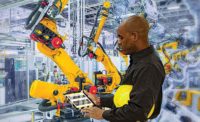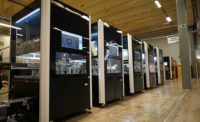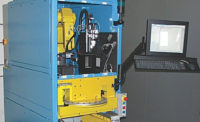The onset of the COVID-19 pandemic hit the airline industry particularly hard. Thousands of flights were canceled. In some cases, entire aircraft fleets were parked and mothballed.
Even now, air passenger traffic in the U.S. has yet to recover. For example, 2,396,663 people passed through TSA airport checkpoints on Oct. 13, 2022. That’s more than double the number of passengers on Oct. 13, 2020, but it’s still down more than 7 percent compared with Oct. 13, 2019.
The pandemic curtailed more than just passenger traffic. Airfreight, including airmail, was also adversely affected. That’s because passenger aircraft transport around 50 percent of the world’s airfreight. Proving that every cloud has a silver lining, cargo airlines were all too happy to pick up the slack. Many have seen record sales during the past two years.
Driven by the air cargo boom and the growth of online commerce, the need to convert unused passenger aircraft into freighters is increasing, a process known as P2F. Based on the current market, analysts expect growing demand for P2F conversions, and that trend will benefit aircraft manufacturers, maintenance companies, airlines and leasing companies.
A P2F conversion is technically complex. It requires highly qualified technicians and a large number of parts whose processing must be coordinated to ensure timely completion. Only a few years ago, many steps in the P2F process were carried out manually. Today, however, those processes are increasingly being automated.
Reinforcing the floor structure of passenger aircraft to accommodate heavier payloads, is one such labor-intensive process. It involves drilling thousands of holes. To accomplish this task, Singapore-based ST Engineering Aerospace Ltd.—a specialist in aircraft conversion—relies on a robotic cell. ST Engineering worked with Helios Applied Systems, also based in Singapore, to design and build the cell.
The robotic cell drills dozens of holes in the floor grids of Boeing’s 767-300ER aircraft at ST Engineering’s plant near Paya Lebar to convert it into a freighter in accordance with Boeing’s standards. To do this, the cell moves along the floor structure, allowing the robot to drill holes according to a predefined plan. The cell is located in a hangar that is conveniently adjacent to the converted aircraft. The cell consists of a moving platform with a hydraulic lift, a six-axis robot with a 180-kilogram payload, an end-of-arm tool with a special image processing system developed by Helios, a motor spindle with 6 kilowatts of power, and a hollow shank taper fixture for automatic tool changing.
In addition to parameters such as concentricity and high speeds, the most important prerequisite for selecting the right spindle was the possibility of easily adapting it to the existing robot by means of a tool changer. Helios found what it was looking for with automation specialist Zimmer Group of Rheinau, Germany.
Zimmer has 13 branches worldwide, three of which are in Asia. Zimmer supplied Helios with its HF145-001 series air-cooled spindle, which has a power rating of 6 kilowatts and a maximum speed of 24,000 rpm. The spindle comes complete with an EtherCAT operating terminal, cables and frequency converter. The spindle is particularly suitable for precise positioning tasks with integrated safety technology. It works equally well in operations at low or high speed. The inverter offers optimum power output with perfect coordination of the spindle.
To be more flexible for future applications, the spindle was mounted directly on a tool changer, also from Zimmer. The tool changer allows the spindle to be exchanged for another tool or handling unit, so the robot can accomplish more than one task. In addition to the tool changer, Zimmer supplied a storage station for the various tools.
Zimmer supplied the spindle with a fieldbus connection (EtherCAT) and also handled the parameterization of the unit. Zimmer also helped Helios during installation and has provided technical support during operation.
“Due to the rigid design and the very smooth running of the spindle, even at higher speeds, the drilling result is very good. You have to keep in mind that these parts are light and not completely flat, so the vision system detects the position and angle of each hole,” says Sunil Raibagi, project manager and vice president of business development and strategy at Zimmer.
Helios is satisfied with the cell. “We appreciate Zimmer Group as a long-term partner and are absolutely convinced of the qualities of the spindle. We were also particularly impressed with the service provided by Zimmer Group, who were always on hand to help us throughout the installation,” says Shyi-Herng Kan, managing director of Helios.
While the robot is currently focused on drilling floor grids, the ST Engineering team is working with Helios to program the machine so it can also be used to set countersunk rivets. “We believe the robots can handle [these types of processes] well,” says Hui Fung Lee, senior vice president and head of innovation and continuous improvement at ST Engineering.
In the coming months, the robot will also be programmed to perform other functions and work on other aircraft models, including Airbus freighter conversions. “We know that the P2F process is very complex and requires many people for the entire conversion process,” Lee explains. “Therefore, we are constantly looking for ways to improve our productivity.”
Tasks that lend themselves to automation tend to be standardized and highly repetitive, Lee says. Starting next year, ST Engineering plans to automate the drilling of floor grilles for the A321-200P2F conversion programs it owns through EFW, a joint venture with Airbus.
For more information on spindles, tool changers and other robot peripherals, visit www.zimmer-group.com.






